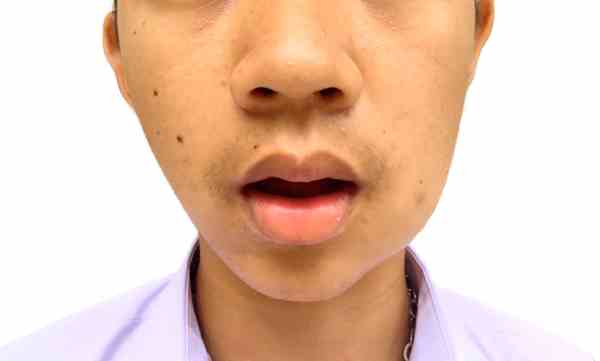Swollen face and toothache. Facial Swelling and Toothache: Understanding Dental Emergencies and Treatment Options
What causes facial swelling and toothache. How to identify dental emergencies. When to seek immediate medical attention for oral health issues. What are the best treatment options for tooth pain and swelling. How to prevent dental problems and maintain good oral hygiene.
Understanding Facial Swelling and Toothache: Causes and Symptoms
Facial swelling and toothache are common dental issues that can significantly impact one’s quality of life. These conditions often occur together and can be indicative of various underlying dental problems. To better understand these issues, let’s explore their causes and symptoms.
Common Causes of Toothache and Facial Swelling
Toothache and facial swelling can be triggered by several factors, including:
- Tooth decay
- Dental injuries
- Cracked or chipped teeth
- Loose or broken fillings
- Pulp inflammation
- Receding gums
- Dental abscesses
- Sinus infections
- Mouth ulcers
- Jaw problems
These issues can lead to varying degrees of pain and discomfort, ranging from mild to severe. The pain may be constant, throbbing, or intermittent, and can affect not only the tooth but also the surrounding areas such as the head, ear, and jaw.

Recognizing the Symptoms
Identifying the symptoms associated with toothache and facial swelling is crucial for seeking timely treatment. Common symptoms include:
- Swelling around the affected tooth and inside the mouth
- Swelling of the jaw and face
- Pain when chewing
- Bleeding from the tooth or gums
- Sensitivity to hot, cold, or sweet foods and drinks
- Fever (temperature over 38°C)
- Difficulty breathing or swallowing
- Redness and inflammation in the mouth
- Bad-tasting discharge
Do these symptoms always indicate a dental emergency? While some cases may require immediate attention, others can be managed with home care until you can see a dentist. Understanding the severity of your symptoms is key to determining the urgency of your situation.
Identifying Dental Emergencies: When to Seek Immediate Help
Distinguishing between a minor dental issue and a true emergency can be challenging. However, certain symptoms and situations warrant immediate medical attention. Recognizing these signs can help prevent complications and ensure prompt treatment.

Red Flags for Dental Emergencies
Seek immediate medical help if you experience any of the following:
- Severe, persistent pain that doesn’t respond to over-the-counter pain relievers
- Significant facial swelling that affects your ability to open your mouth or swallow
- Fever accompanied by oral pain and swelling
- Bleeding that doesn’t stop with applied pressure
- Trauma to the face or mouth resulting in loose or knocked-out teeth
- Signs of infection, such as pus drainage or a foul taste in the mouth
Is facial swelling always a sign of a dental emergency? While facial swelling can be concerning, it’s not always an immediate emergency. However, if the swelling is severe, spreading rapidly, or accompanied by difficulty breathing or swallowing, it should be treated as an urgent matter.
Diagnosis and Treatment: What to Expect at the Dentist
When you visit a dentist for toothache and facial swelling, they will conduct a thorough examination to determine the underlying cause and appropriate treatment. Understanding the diagnostic process and potential treatment options can help alleviate anxiety and prepare you for your visit.

The Diagnostic Process
During your dental visit, you can expect the following:
- A detailed discussion of your symptoms and dental history
- A physical examination of your mouth, teeth, and gums
- X-rays to identify any hidden issues, such as decay or abscesses
- Possible additional tests to rule out other conditions
Treatment Options
Treatment for toothache and facial swelling varies depending on the underlying cause. Common treatments include:
- Dental fillings for cavities
- Root canal therapy for infected or inflamed pulp
- Crowns for severely damaged teeth
- Scaling and root planing for gum disease
- Antibiotics for bacterial infections
- Extraction for severely damaged or infected teeth
How long does it take to recover from dental treatments? Recovery time varies depending on the procedure. Simple fillings may require little to no recovery time, while more invasive procedures like root canals or extractions may need several days for full recovery.
Home Care and Pain Management: Coping with Toothache and Swelling
While waiting for your dental appointment or recovering from treatment, there are several steps you can take at home to manage pain and swelling. These measures can provide temporary relief and help prevent the condition from worsening.

Effective Home Remedies
- Saltwater rinse: Mix one teaspoon of salt in a cup of warm water and rinse your mouth for 30 seconds. This can help reduce inflammation and kill bacteria.
- Cold compress: Apply a cold pack wrapped in a towel to the affected area for 15-20 minutes at a time to reduce swelling and numb pain.
- Over-the-counter pain relievers: Nonsteroidal anti-inflammatory drugs (NSAIDs) like ibuprofen can help manage pain and reduce inflammation.
- Elevate your head: When lying down, prop your head up with pillows to reduce blood flow to the affected area and minimize swelling.
- Avoid irritants: Stay away from very hot or cold foods and drinks, as well as sugary or acidic items that can exacerbate pain.
Can clove oil or aspirin be used for toothache relief? While some people recommend using clove oil or applying crushed aspirin directly to the affected area, these methods are not scientifically proven and may cause irritation. It’s best to stick to dentist-approved home care methods.

Preventing Dental Issues: Maintaining Good Oral Hygiene
The best way to avoid dental emergencies and maintain optimal oral health is through consistent preventive care. By adopting good oral hygiene habits and making lifestyle changes, you can significantly reduce your risk of developing toothaches, swelling, and other dental problems.
Essential Oral Hygiene Practices
- Brush your teeth at least twice a day with fluoride toothpaste
- Floss daily to remove plaque and food particles between teeth
- Use an antiseptic mouthwash to kill bacteria and freshen breath
- Replace your toothbrush every 3-4 months or sooner if bristles are frayed
- Eat a balanced diet rich in vitamins and minerals
- Limit sugary and acidic foods and drinks
- Drink plenty of water, especially if it’s fluoridated
- Avoid smoking and excessive alcohol consumption
- Wear a mouthguard during sports activities
- Schedule regular dental check-ups and cleanings
How often should you visit the dentist for preventive care? Most dental professionals recommend visiting the dentist every six months for routine check-ups and cleanings. However, some individuals may need more frequent visits based on their oral health status and risk factors.

The Impact of Oral Health on Overall Well-being
Maintaining good oral health is not just about having a bright smile; it plays a crucial role in your overall health and well-being. Poor oral hygiene can lead to various complications that extend beyond the mouth, affecting different aspects of your physical and mental health.
Potential Complications of Untreated Dental Issues
- Cardiovascular problems: Bacteria from gum disease can enter the bloodstream and contribute to heart disease and stroke.
- Respiratory infections: Poor oral health may increase the risk of pneumonia and other respiratory diseases.
- Diabetes complications: Gum disease can make it harder to control blood sugar levels in diabetics.
- Pregnancy risks: Oral health issues during pregnancy have been linked to premature birth and low birth weight.
- Nutritional deficiencies: Dental problems can make it difficult to eat a balanced diet, leading to malnutrition.
- Cognitive decline: Some studies suggest a link between poor oral health and an increased risk of dementia.
- Mental health issues: Chronic dental pain and aesthetic concerns can contribute to depression and anxiety.
How does oral health affect quality of life? Good oral health contributes to better overall quality of life by allowing you to eat, speak, and socialize without discomfort or embarrassment. It can boost self-confidence, improve social interactions, and enhance your ability to enjoy a variety of foods.

Advances in Dental Care: Modern Treatments and Technologies
The field of dentistry is constantly evolving, with new technologies and treatments emerging to improve patient care and outcomes. These advancements have made dental procedures more efficient, less invasive, and more comfortable for patients.
Cutting-edge Dental Technologies
- Digital X-rays: Provide clearer images with less radiation exposure
- 3D printing: Used for creating dental implants, crowns, and orthodontic devices
- Laser dentistry: Offers precise and less invasive treatments for various dental procedures
- CAD/CAM technology: Allows for same-day creation and placement of dental restorations
- Intraoral cameras: Enable dentists to show patients detailed images of their oral health issues
- AI-powered diagnostics: Help in early detection of dental problems and treatment planning
How have these advancements improved dental care? Modern dental technologies have made treatments more accurate, efficient, and comfortable for patients. They’ve also improved diagnostic capabilities, allowing for earlier detection and intervention of dental issues.

Emerging Treatments in Dentistry
Several innovative treatments are changing the landscape of dental care:
- Stem cell dental implants: Research is ongoing to develop bioengineered teeth using stem cells
- Smart toothbrushes: Devices that use AI to analyze brushing habits and provide real-time feedback
- Regenerative dentistry: Techniques aimed at regrowing dental tissues like enamel and dentin
- Robotic dentistry: Robotic systems assisting in precise dental surgeries and implant placements
- Teledentistry: Remote dental consultations and monitoring, improving access to dental care
What does the future hold for dental care? As technology continues to advance, we can expect even more personalized, efficient, and minimally invasive dental treatments. These innovations aim to make dental care more accessible, comfortable, and effective for patients worldwide.
Dental Health Education: Empowering Patients for Better Oral Care
Education plays a vital role in improving oral health outcomes. By empowering patients with knowledge about proper oral hygiene practices, nutrition, and the importance of regular dental check-ups, we can significantly reduce the incidence of dental problems and promote overall health.

Key Areas of Dental Health Education
- Proper brushing and flossing techniques
- Understanding the impact of diet on oral health
- Recognizing early signs of dental problems
- The importance of regular dental check-ups
- Age-specific oral care (e.g., for children, elderly)
- Managing dental anxiety
- Understanding the link between oral health and overall health
How can dental health education be effectively delivered? Dental health education can be provided through various channels, including:
- School-based programs
- Community outreach initiatives
- Digital platforms and mobile apps
- One-on-one counseling during dental visits
- Public health campaigns
- Workshops and seminars
By increasing awareness and providing practical knowledge, dental health education empowers individuals to take control of their oral health, potentially reducing the need for emergency dental interventions and improving overall quality of life.
Facial swelling and toothache can be distressing experiences, but understanding their causes, recognizing when to seek help, and knowing how to manage symptoms can significantly improve outcomes. By maintaining good oral hygiene, seeking regular dental care, and staying informed about advancements in dental treatments, you can protect your oral health and overall well-being. Remember, your mouth is a gateway to your body’s health, and taking care of it is an investment in your future.

Toothache and Swelling | healthdirect
What is toothache and swelling?
Toothache and swelling happens when there’s a problem with your teeth or gums, causing pain and discomfort.
If you don’t treat it, toothache can get worse. This can affect your overall health and wellbeing. Visit a dentist as soon as you can.
What symptoms relate to toothache and swelling?
Toothache can start suddenly. It can cause pain and discomfort that ranges from mild to very severe. The pain can be constant, throbbing, or it may come and go. It can also affect your head, ear and jaw.
If you have toothache, you may also have:
- swelling around your tooth and inside your mouth
- swelling of your jaw and face
- pain when chewing
- bleeding from your tooth or gums
- sensitivity to hot, cold or sweet food
CHECK YOUR SYMPTOMS — Use the teeth and dental problems Symptom Checker and find out if you need to seek medical help.
What causes toothache and swelling?
If you have a toothache, it can be caused by dental problems such as:
- tooth decay
- a dental injury
- a cracked tooth
- a loose filling
- a broken filling
- inflammation of the pulp inside your tooth
- receding gums
- a dental abscess
You can also have painful teeth if you have a sinus infection, a mouth ulcer or a problem with your jaw.
Cross section of an adult human molar.
When should I see my doctor?
See your doctor if you have:
- a fever (a temperature over 38⁰C)
- trouble breathing or swallowing
- an infection (your mouth is red, swollen, painful and there’s a bad-tasting discharge)
Call your dentist if the toothache lasts for more than 2 days.
How is toothache and swelling diagnosed?
Your doctor or dentist will examine your teeth and may take an x-ray. They will ask you about your pain and talk about your dental history.
How is toothache and swelling treated?
Treatment will depend on the cause of the toothache or swelling. It may include a filling, root canal therapy or a crown.
If you have gum disease, your dentist will recommend regular brushing and will remove any plaque.
Treating the cause of the tooth pain or swelling will help provide pain relief.
Looking after yourself
It is important to take care of yourself until you can get treatment for your toothache or swelling.
Make sure you keep your teeth and mouth clean. Brush your teeth after every meal using fluoride toothpaste. If your mouth is sore, use a soft toothbrush.
If you smoke, try to cut down or quit.
Eat foods that are easy to chew and swallow. Avoid drinks that are very hot or very cold.
If you are in pain, ask your healthcare practitioner about pain relief medicines that you can take. Take them regularly and always follow the instructions on the packet.
If you require emergency pain relief, there are some tips you can try at home.
- Try lying with your head propped up on a pillow, as lying flat can sometimes make dental pain feel worse.
- Salt water may provide mild toothache relief. Mix one teaspoon of salt into a cup of warm water, then take a mouthful of the liquid. Hold it in your mouth so it covers your affected tooth for two minutes, then spit it out. Do not swallow it. Salt water should not be given to children. They may accidentally swallow it, which could make them feel sick or vomit.
- Try using a cold compress (such as a cold pack) against the side of your face. This will help reduce swelling and provide tooth pain relief. Wrap the ice pack in a cloth before placing it against your skin.
Using clove oil or gargling aspirin are not recommended.
Can toothache and swelling be prevented?
Taking care of your mouth helps prevent toothache and swelling. As well as brushing and flossing regularly:
- eat a healthy balanced diet
- avoid sugary and fatty foods
- drink water containing fluoride
- avoid smoking
Complications of toothache and swelling
It’s important to fix the cause of toothache and swelling. Poor mouth health can destroy the tissues in the mouth, leading to long-term problems. It can make it harder for you to chew and swallow and can affect your nutrition and general health. Untreated dental problems can also affect your overall health.
Poor mouth health can destroy the tissues in the mouth, leading to long-term problems. It can make it harder for you to chew and swallow and can affect your nutrition and general health. Untreated dental problems can also affect your overall health.
Resources and support
Find out more about looking after your teeth on the Australian Dental Association’s website.
Get advice on mouth care.
Sources:
Australian Dental Association
(Dental trauma and first aid),
Australian Institute of Health and Welfare
(Oral health and dental care in Australia),
Australian Dental Association
(Brushing),
Dental Services Victoria
(Periodontitis – gum disease),
Healthy WA
(Tooth decay and gum disease),
Queensland Government
(Emergency dental),
Sports Medicine Australia
(Mouthguards, Preventing Dental Injuries in sport),
Australian Institute of Health and Welfare
(National Oral Health Plan 2015-2024: performance monitoring report)
Learn more here about the development and quality assurance of healthdirect content.
Dental Abscess with Facial Cellulitis
A dental abscess is a pocket of fluid (pus) at the tip of a tooth root in your jawbone. It’s caused by an infection that often starts with a crack or cavity in a tooth. Symptoms of a dental abscess may include mouth pain and swelling, fever, red gums, and bad taste in the mouth. The pain is often made worse by having hot or cold food or drinks, or biting on hard foods. The pain may spread from the tooth to your ear, or to the area of your jaw on the same side.
If the infection isn’t treated, more serious infections may spread to the face (facial cellulitis). Facial cellulitis is an infection of the skin and underlying soft tissues. This is a very serious condition. Once the infection and swelling starts, it can spread quickly. Symptoms of cellulitis may include red and swollen skin, fever, chills, and extreme tiredness (fatigue).
Home care
Follow these tips when caring for yourself at home:
-
Don’t have hot and cold foods and drinks.
 Your tooth may be sensitive to changes in temperature. Don’t chew on the side of the infected tooth.
Your tooth may be sensitive to changes in temperature. Don’t chew on the side of the infected tooth. -
Put a cold pack on your jaw over the sore area. This can help reduce pain.
-
You may use over-the-counter medicine to ease pain, unless another medicine was prescribed. Talk with your healthcare provider before using acetaminophen or ibuprofen if you have chronic liver or kidney disease. Also talk with your provider if you’ve had a stomach ulcer or GI (gastrointestinal) bleeding.
-
Your provider will prescribe an antibiotic. Take it exactly as directed. Don’t miss any doses.
Follow-up care
Follow up with your provider, dentist, or oral surgeon, as advised. Severe cases of cellulitis must be checked again in 24 hours. Once a tooth infection occurs, it will be a problem until the infection is drained. This is done through surgery or a root canal. Or you may need to have your tooth pulled.
Once a tooth infection occurs, it will be a problem until the infection is drained. This is done through surgery or a root canal. Or you may need to have your tooth pulled.
Call 911
Call 911 if any of these occur:
-
Swelling spreads to the upper half of your face or neck
-
Your eyelids start to swell shut
-
Vision problems
-
Abnormal drowsiness or confusion
-
Headache or a stiff neck
-
Weakness or fainting
-
Trouble swallowing or breathing
When to get medical advice
Call your healthcare provider right away if any of these occur:
-
Pain gets worse or spreads to your neck
-
Swelling or redness gets worse
-
Fever of 100.
 4°F (38°C) or higher, or as directed by your provider
4°F (38°C) or higher, or as directed by your provider
© 2000-2022 The StayWell Company, LLC. All rights reserved. This information is not intended as a substitute for professional medical care. Always follow your healthcare professional’s instructions.
Was this helpful?
Yes
No
Tell us more.
Check all that apply.
Wrong topic—not what I was looking for.
It was hard to understand.
It didn’t answer any of my questions.
I still don’t know what to do next.
Other.
NEXT ▶
Last question: How confident are you filling out medical forms by yourself?
Not at all
A little
Somewhat
Quite a bit
Extremely
Thank You!
Cheek swelling near the tooth what to do and how to treat
- Home
- Articles
- WHAT TO DO IN WHEN THE CHEEK TUMORS NEAR THE TOOTH
A swollen cheek first of all brings psychological discomfort, because it is extremely difficult to hide such a defect . Moreover, if pain joins the swelling of the tissues, the problem should not be ignored. First you need to figure out what events preceded the onset of symptoms. What to do if the cheek is swollen near the tooth? If you didn’t have a tooth removed and there were no injuries, don’t allow complications: get a diagnosis and find out if you should worry.
First you need to figure out what events preceded the onset of symptoms. What to do if the cheek is swollen near the tooth? If you didn’t have a tooth removed and there were no injuries, don’t allow complications: get a diagnosis and find out if you should worry.
Swollen cheek and toothache: what to do
With inflammatory edema, soft tissues swell, additional symptoms join, which vary depending on the causes of swelling. Usually, in the place of edema, the skin is denser, reddened, painful, hot. Possible increase in body temperature.
What should I do if my tooth hurts and my cheek swells up? To begin with, analyze the previous events. This will not help to accurately diagnose and choose treatment tactics, but it will be useful for the doctor to collect an anamnesis.
Possible causes of swollen cheek:
- Mechanical trauma to the jaw or head. In case of serious injuries, the consequences are most often noticeable: hemorrhages under the skin, swelling under the eyes, abrasions.
 After serious falls and blows, headaches, vomiting, dizziness, fainting occur.
After serious falls and blows, headaches, vomiting, dizziness, fainting occur. - Advanced gingivitis or periodontitis, periodontitis. Dental diseases most often cause swelling of the cheeks and pain in the gums and teeth. What to do if the tooth hurts and the tissue around is swollen? Consult a dentist: the doctor will prescribe instrumental diagnostics to find the exact cause of the condition.
- Abscess. If the infectious process affects the alveolar process, there is an accumulation of purulent contents. It can develop within the tissues of the tooth due to the death of the pulp, in the tissues surrounding the tooth in the periodontal pocket. With an abscess, one-sided inflammation is noticeable, which causes asymmetry of the face.
- Traumatic eruption of the wisdom tooth with pocket formation and bone irritation (pericoronitis).
- Osteomyelitis. Necrosis occurs when dental treatment is ignored and complications develop that affect the bone and surrounding tissues.
 Rarely, a purulent-necrotic process develops as a complication of sinusitis.
Rarely, a purulent-necrotic process develops as a complication of sinusitis. - Cyst formed as a result of traumatic impact, periodontitis, infection, diseases of the paranasal sinuses.
- Peri-implantitis – inflammation of the bone and soft tissues around the implant.
Usually swelling of the cheeks occurs due to dental diseases. But another route of infection is also possible: microorganisms spread with the bloodstream during respiratory diseases.
Tooth removed, swollen cheek: what to do
Extraction (removal) of teeth is different for each patient. The most problematic are the molars, especially the “eight” – wisdom teeth. Sometimes a tooth needs to be removed due to the formation of a cyst near the root.
What to do if it is swollen after tooth extraction? Keep in mind that this is a natural reaction to surgery. The gum area in the area of the extracted tooth can hurt from 1 to 3 days, sometimes longer, but pain and swelling should subside. Be sure to monitor the condition of the blood clot. Due to infection of the formed hole, alveolitis may develop.
Be sure to monitor the condition of the blood clot. Due to infection of the formed hole, alveolitis may develop.
What to do when the gums are swollen, but the teeth do not bother
Possible causes:
- Erysipelas. It is caused by streptococci, accompanied by fever, chills, weakness. With erysipelas, the affected shiny areas of red color and the boundaries of healthy tissues are clearly visible. Antibiotic therapy is used for treatment.
- Allergy. The sudden appearance of swelling of the face can be caused by a strong allergen, including an insect bite. Perhaps the appearance of urticaria: bubbles of a rash, intolerable itching, redness, burning. Edema with airway occlusion is especially dangerous: the victim urgently needs medical attention.
- Endodontic treatment. After filling the canals, swelling may occur, which disappear within a few days. If pain and swelling do not subside, but increase, a possible cause is treatment errors.
- Neuralgia.
 When the facial nerve is damaged, it is not the tooth that hurts, but the area near the ears, throat, and tingling of the face is possible.
When the facial nerve is damaged, it is not the tooth that hurts, but the area near the ears, throat, and tingling of the face is possible.
In any case, if the edema does not subside for several days or other symptoms join, you should consult a doctor to avoid negative consequences.
Diagnosis
Even if you are worried about a swollen cheek without pain, you should consult a doctor. He will conduct an examination and prescribe tests that will help determine the diagnosis. Among the mandatory diagnostic methods, no matter which doctor you turn to, there will be x-rays. Modern doctors prefer a three-dimensional image using cone beam tomography. CBCT allows assessing the condition of hard and soft tissues of the jaw, examining all the details of the image in layers, and also does not harm the human body. Thanks to CBCT, a specialist will accurately and quickly identify the cause of inflammation and make a correct diagnosis.
Swelling appears: what to do at home
To relieve the condition and wait for a visit to the doctor, follow a number of tips.
What to do if you have a tooth removed and your cheek is swollen:
- Use cold compresses;
- Take suitable pain medication.
- Be sure to contact your doctor.
If symptoms worsen, fever, nausea, do not delay the visit to the doctor. The doctor will refer you to a tomography to determine the cause of the pathology and determine the tactics. Residents of the Moscow region and Moscow can make CBCT using high-precision equipment at the modern independent diagnostic center 3D Medica.
+7 495 120-24-77
DC “Kitay Gorod”,
Moscow,
Lubyansky proezd, 27/1, building 1, 4th floor, office 434
This email address is protected from spam bots. You must have JavaScript enabled to view.
Mon – Sat 9:00-21:00
Sun – 10:00-18:00
What to do if a tooth is swollen at home – it hurts and you don’t know how to treat it
7 August 2018
Content
- Causes of inflammation
- Activities before visiting the dentist
- Diagnostics
- Dental treatment options
- Prevention of inflammation
Such a nuisance as tooth swelling is familiar to many. To be more precise, it is not the tooth itself that swells, but the soft tissues surrounding it. As a rule, this happens after a toothache appears, and the patient does not come to the appointment to eliminate its cause. Pain signals a problem – pulpitis, periodontitis and others. Swelling indicates that an inflammatory process is underway, which must be stopped as soon as possible, otherwise it will spread more widely.
To be more precise, it is not the tooth itself that swells, but the soft tissues surrounding it. As a rule, this happens after a toothache appears, and the patient does not come to the appointment to eliminate its cause. Pain signals a problem – pulpitis, periodontitis and others. Swelling indicates that an inflammatory process is underway, which must be stopped as soon as possible, otherwise it will spread more widely.
Possible causes of inflammation
Inflammation can start for several reasons:
- Lack of timely treatment of caries.
- Prolonged relief of toothache with anesthetics, as a result of which the pathology developed into pulpitis.
- Poor oral hygiene.
- Non-compliance with recommendations for oral care after prosthetics or implantation.
- Parodontosis, periodontitis, occurrence of gingival canals.
- When wisdom teeth erupt, edema is also possible.
Steps to take before visiting the dentist
You can relieve symptoms and pain at home. These are temporary measures that will help you wait for a visit to the dentist:
These are temporary measures that will help you wait for a visit to the dentist:
- Rinse with a solution of salt and soda with the addition of iodine.
- Use of special gargles from pharmacies and herbal infusions.
- Eliminate hard foods so as not to aggravate symptoms.
- The site of inflammation must not be heated. If it is caused by a purulent abscess, there is a danger that its contents will enter the soft tissues and blood.
- Relief of pain with painkillers.
Diagnosis
Treatment options
Treatment depends on what is causing the swelling. The doctor selects a treatment regimen for each clinical picture, including if it is a complex form, provoked by the patient’s long-term inactivity and not going to dentistry.
- If the inflammation is caused by poor oral hygiene, it is important to have a professional cleaning, antibiotic therapy, and an explanatory talk on dental and gum hygiene.

- If there is inflammation in the area of the erupting wisdom tooth, symptoms should be removed according to the situation, and surgical intervention is also possible (an incision in the gums to drain pus, if it has accumulated).
- In case of inflammation caused by periodontitis, it is important to eliminate the cause of the problem – clean the teeth from calculus and sanitize the pocket.
In any case, the actions of a specialist are aimed at saving the tooth and eliminating the problem as soon as possible. Removal is carried out in extreme cases, when the therapeutic approach is powerless. This happens with inflammation as a result of serious injury, as well as in neglected situations. A timely visit to the doctor will help get rid of the problem without removing the tooth.
Prevention of inflammation of the teeth
Inflammation is provoked by infection. The patient can carry out a number of preventive actions to prevent the entry of bacteria:
- Thorough oral hygiene, brushing teeth twice a day.


 Your tooth may be sensitive to changes in temperature. Don’t chew on the side of the infected tooth.
Your tooth may be sensitive to changes in temperature. Don’t chew on the side of the infected tooth. 4°F (38°C) or higher, or as directed by your provider
4°F (38°C) or higher, or as directed by your provider After serious falls and blows, headaches, vomiting, dizziness, fainting occur.
After serious falls and blows, headaches, vomiting, dizziness, fainting occur. Rarely, a purulent-necrotic process develops as a complication of sinusitis.
Rarely, a purulent-necrotic process develops as a complication of sinusitis. When the facial nerve is damaged, it is not the tooth that hurts, but the area near the ears, throat, and tingling of the face is possible.
When the facial nerve is damaged, it is not the tooth that hurts, but the area near the ears, throat, and tingling of the face is possible.
